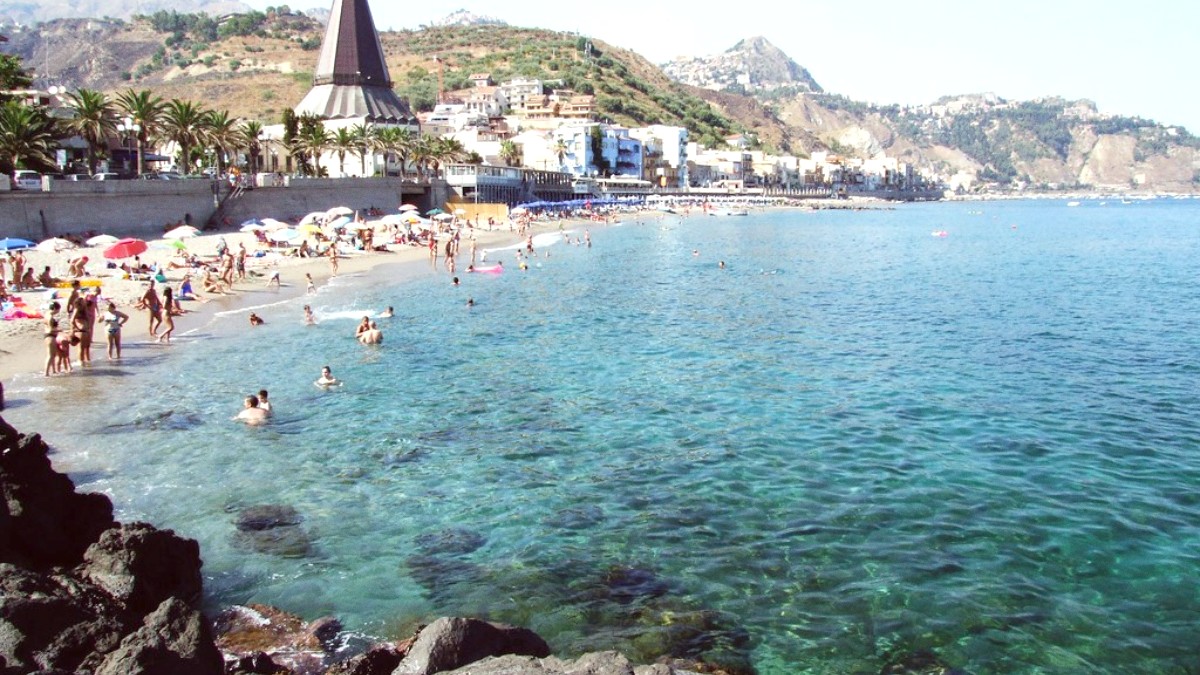
Sicily, Italy
Sicilian cuisine blends Greek, Roman, Arab, Norman, and Spanish influences, forming an unique culinary identity.
The island's fertile volcanic soil and extensive coastline guarantee an abundance of fresh, high-quality ingredients.
Swordfish, tuna, sardines, anchovies are , often grilled, fried, or in pasta dishes.
Eggplant, tomatoes, zucchini, citrus fruits, prickly pears. Pistachios and almonds are prominent.
Ricotta, Caciocavallo, Pecorino are widely used. Basil, oregano, mint, chili add distinct flavors.
Iconic pasta from Catania with tomato-basil sauce, fried eggplant cubes, and salted ricotta.
Widely available in Giardini Naxos trattorias.
Fried rice balls, essential street food; common fillings include ragù or prosciutto and cheese.
Conical in eastern Sicily, round in Palermo. Find at bars, rosticcerie.
Classic sweet and sour eggplant stew with celery, olives, capers, and tomato sauce.
Served chilled as an appetizer or side dish.
Etna DOC wines (Nerello Mascalese, Carricante) and Nero d'Avola are excellent choices.
Sicilian crushed ice dessert (lemon, coffee, almond) often consumed for breakfast with brioche.
Upscale dining exists in larger hotels. For Michelin-starred options, Taormina has `Ristorante La Capinera` or `Otto Geleng` at Grand Hotel Timeo.
Affordable options like pizzerias, rosticcerie, and local bakeries are available.
Local markets and supermarkets. International cuisine is limited, with a focus on local heritage.
Vegetarian options are easy to find. Vegan can be challenging but possible with clear communication ('senza formaggio', 'senza latticini').
Halal/Kosher availability is extremely limited outside large cities. Self-catering from supermarkets is best.
Italy has high celiac awareness. Some restaurants offer gluten-free pasta/pizza. Always communicate allergies.
Travel translation cards or apps can help explain allergies.
Available in Taormina/Catania focus on traditional Sicilian cooking, pasta, or arancini.
Visit olive oil mills, citrus groves, and Etna vineyards for tours and tastings.
Dining with a sea view along Lungomare, especially at sunset.
Inquire about the 'catch of the day' at local restaurants.
Crispy fried pastry shells filled with sweet, creamy ricotta, often garnished with candied fruit or pistachios.
A required Sicilian dessert.
An elaborate sponge cake layered with sweetened ricotta, candied fruit, covered with marzipan.
Visually striking.
Meals are meant to be savored. Service can be slower than in some countries, demonstrating a relaxed approach to dining. Do not rush your meal.
Ordering wine by the carafe (vino della casa) a good, affordable option. Limoncello or Amaro often served as a digestivo.
Look for local trattorias or restaurants a few streets back from the main tourist promenade.
Italian meals progress through Antipasto, Primo (pasta), Secondo (meat/fish), Contorno (side), Dolce, Caffè, Digestivo.
Practicing basic Italian phrases shows respect and frequently results in warmer interactions. Do not expect heavy dish customization.
Choosing to dine at local trattorias away from the main tourist strips directly sustains the community.
Delivers a more authentic interaction.
Places popular with locals are a good indicator of quality and value.
Look for these dining spots.
Many restaurants along the Lungomare offer outdoor seating with stunning views of the Ionian Sea and Mount Etna.
Experiencing a granita (lemon or coffee) served with a warm, soft brioche bun at a local bar is an unique Sicilian custom.
Inquire at local restaurants about the "catch of the day," often sourced directly from local fishermen.
Navigating dietary restrictions in a foreign country can be challenging, but Italy becomes increasingly accommodating.